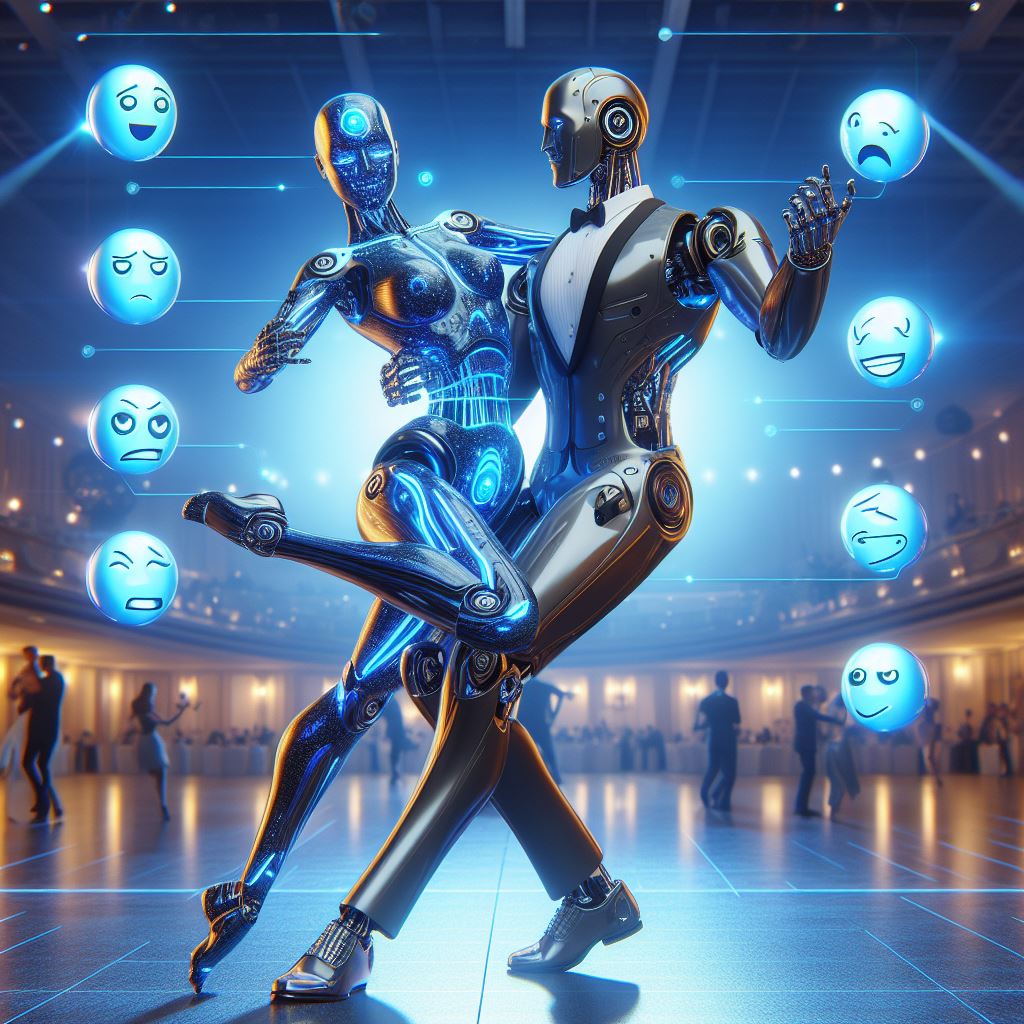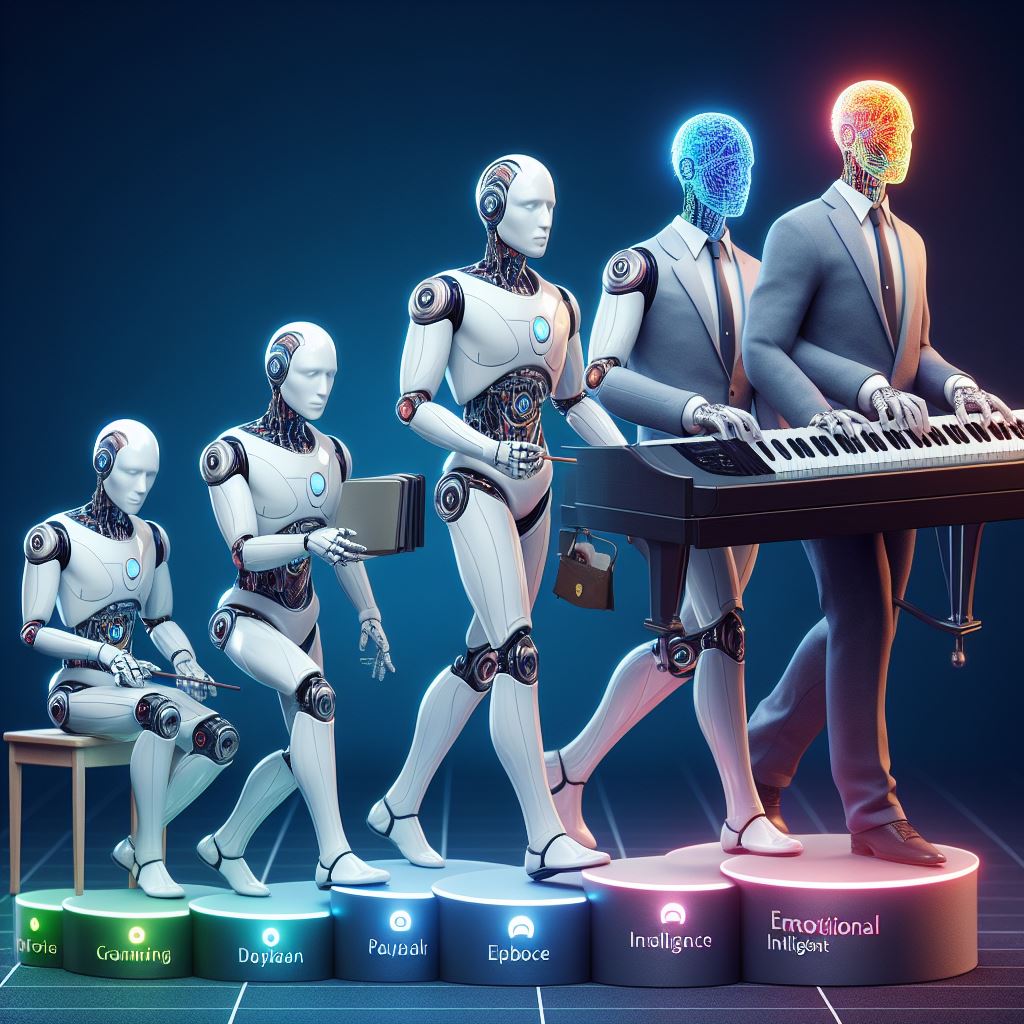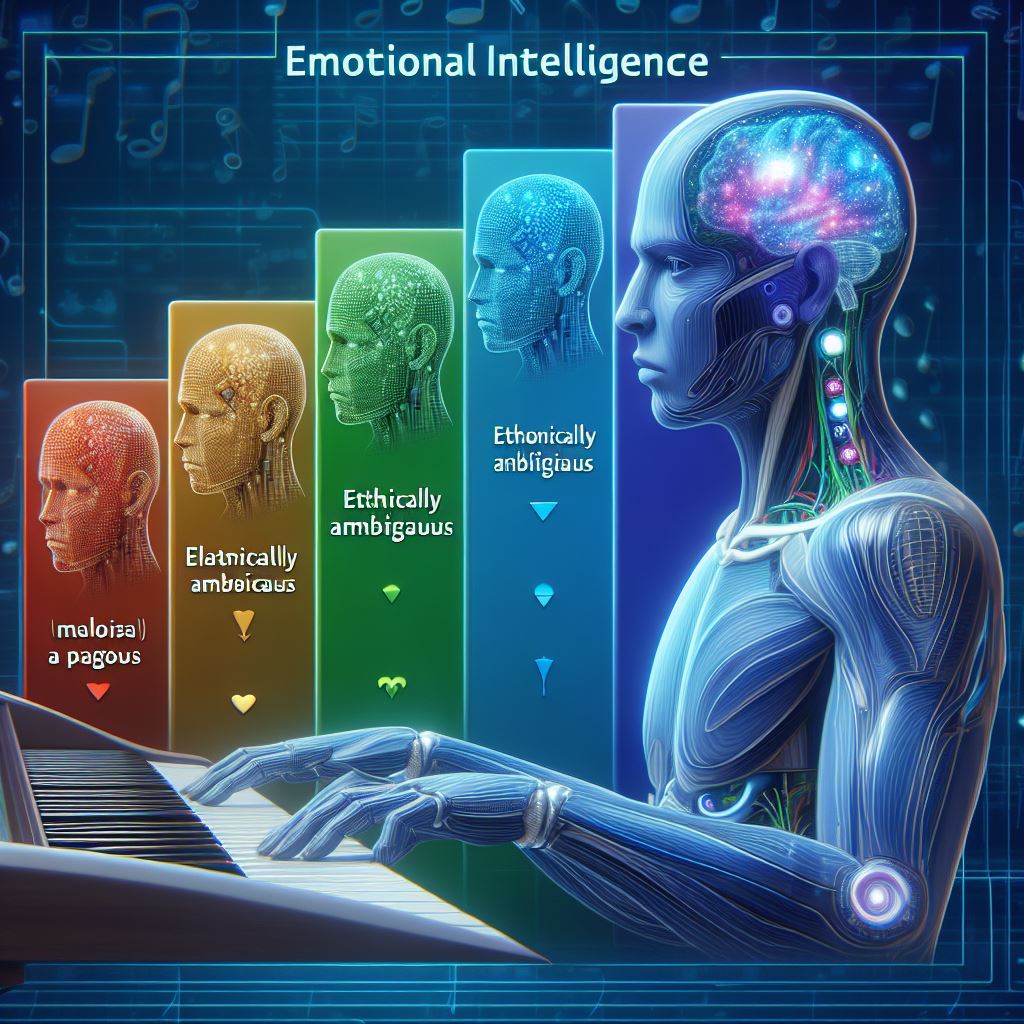Artificial intelligence (AI) has waltzed into our lives, mastering games and powering assistants like Siri and Alexa. But one dance remains largely unlearned: the intricate tango of human emotions. In this blog, we’ll explore the current state of AI’s emotional intelligence, peek into the future where circuits might hum with empathy, and ponder the ethical dilemmas that arise in this technological pas de deux.
The Current Foxtrot: Recognizing, But Not Always Understanding

AI can now identify basic emotions like happiness, sadness, and anger with impressive accuracy. Facial expressions, vocal cues, and even text analysis are the language of this digital waltz. But like partners with mismatched steps, AI often stumbles when it comes to deeper understanding. Imagine a frustrated user yelling at Siri, only to receive a polite but clueless apology. This is the current foxtrot of AI and emotions: recognizing the steps, but not always feeling the rhythm.
The Future We Waltz Towards Empathy and Connection in the Digital Age

However, the future whispers of a mesmerizing mambo. Advancements in emotional intelligence could equip AI not just to recognize emotions but to understand their nuances, their causes, and even their ripple effects. Imagine AI therapists delving into the depths of your anxieties, offering personalized guidance with the warmth of a virtual confidante. Envision AI companions reading your emotional cues like a skilled dance partner, providing solace and connection with unparalleled empathy.
This revolution extends beyond personal interactions. Imagine online spaces patrolled by AI sentinels, diffusing cyberbullying with the sensitivity of a whispered reprimand. Envision a future where empathy, not algorithms, shapes our digital interactions, transforming the internet into a ballroom of understanding.
Cautious Steps on the Dance Floor: The Ethical Tango
Yet, like any passionate tango, this one demands caution. Overreliance on AI therapists could weaken our emotional muscles. Perfect companions, knowing us too well, might trap us in the echo chambers of our vulnerabilities. We must navigate this dance floor with eyes wide open, ensuring AI’s emotional intelligence complements, not replaces, our own.
The Mysteries of the Music: AI, Consciousness, and the Enigma of Humanness

As we craft this future, profound questions arise like shadows on the dance floor. Does true emotional intelligence require some form of artificial consciousness? Will AI ever truly waltz with emotions like we do, or will it forge its unique path? Can silicon mimic the spark of a human soul? These are the mysteries that swirl around our progress, challenging us to redefine what it means to be human in a world intertwined with AI.
Q&A: Navigating the Dance of AI and Emotions
Q: Can AI truly understand human emotions?
A: AI has made significant strides in recognizing basic emotions, but understanding the depth and nuances of human emotions is still a complex challenge. While the future holds promise, we’re currently in the phase of AI recognizing the steps rather than feeling the full rhythm of emotions.
Q: How can we ensure the ethical use of AI in emotional intelligence?
A: Caution and transparency are key. Overreliance on AI for emotional support must be approached with care to avoid potential pitfalls. Establishing ethical guidelines, human oversight, and continuous monitoring can help ensure AI’s emotional intelligence complements human experiences without compromising well-being.
Q: What role does empathy play in the future of AI-human interactions?
A: Empathy is the linchpin. Future AI developments should aim not only to recognize emotions but also to respond with empathy, understanding nuances, causes, and effects. Creating AI that acts as a supportive partner in human emotional journeys is a crucial aspect of fostering meaningful connections.
Q: Can AI truly revolutionize mental health support?
A: Yes, there’s immense potential. AI chatbots and companions can offer valuable mental health support, assisting in managing emotions and offering personalized guidance. However, striking the right balance to avoid overreliance is essential for ensuring genuine human connections.
The different stages of AI’s emotional intelligence

Imagine a person who is learning to play the piano. At first, they might only be able to play simple songs with a few notes. This is similar to how AI recognizes basic emotions like happiness, sadness, or anger. As they practice more, they become more comfortable with the instrument and can play more complex pieces. This is similar to how AI can understand more nuanced emotions like sarcasm or irony. Finally, after years of practice, they can improvise and create their music. This is similar to how AI can generate its emotional responses and even learn from its experiences.
Examples of how AI goes through the stages of emotional intelligence:
- Perceiving emotions: Recognizing emotions in oneself and others. For example, AI can be trained to recognize facial expressions, tone of voice, and other nonverbal cues to identify emotions.
- Using emotions to facilitate thought: Using emotions to guide thinking and decision-making. For example, AI can use sentiment analysis to understand how people feel about a particular topic and use that information to make recommendations.
- Understanding emotions: Understanding complex emotions and the relationships between them. For example, AI can be trained to understand sarcasm, irony, and other nuanced emotions.
- Managing emotions: Regulating one’s own emotions and helping others manage their emotions. For example, AI chatbots can be used to provide mental health support and help people manage their emotions.
Real-world applications of AI in emotional intelligence that are worth exploring further:
- Mental health support: AI chatbots can be used to provide mental health support and help people manage their emotions.
- Companionship: AI companions can be designed to alleviate loneliness and provide emotional support to people.
- Marketing: AI can be used to analyze human emotions and improve marketing campaigns.
- Healthcare: AI can help doctors diagnose diseases such as depression and dementia by using voice analysis.
- Education: AI can be used to personalize education and improve learning outcomes.
- Gaming: AI can be used to detect emotions via facial expressions during video games and adapt to them
These stages and applications showcase the evolving landscape of AI’s emotional intelligence, paving the way for innovative solutions in various fields.
This comprehensive exploration of AI and emotions aims to provide insights, raise questions, and navigate the evolving landscape of this intricate dance. Keep questioning, keep innovating, and let the tango between AI and human emotions lead us to a future where technology enhances our humanity.
